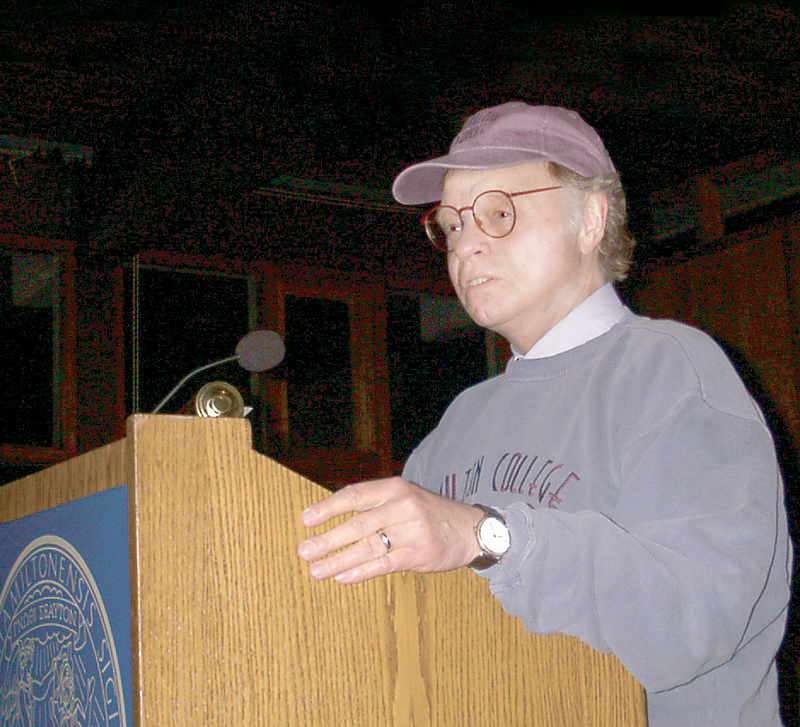
On Saturday, Apr. 27, Winslow Professor of Physics Emeritus James W. Ring ’51, P’84 passed away. In 1951, Ring graduated from Hamilton as an elected member of the honor society Phi Beta Kappa with a bachelor’s degree in physics and mathematics. He followed his academic interests to the University of Rochester, where he earned a Ph.D. in nuclear physics in 1958 and became a member of Sigma Xi.
Ring returned to the Hill in 1957, where he joined the College’s faculty as an assistant professor. Over the course of more than four decades, he earned tenure, received a promotion to associate professor in 1962, and became a full professor in 1969; he retired in 2003.
Ring was heavily involved with the Physics Department and frequently worked with his colleagues on a variety of topics across the sciences, including dating Gene Domack’s sediment core samples from Antarctica and analyzing experiments for evidence of the validity of Phil Pearle’s continuous spontaneous localization theory. Recently, he established an endowment at Hamilton to support student research in the sciences to extend his legacy of involving students in his research.
Ring’s work has been published in a variety of scholarly journals, including
The Physics of Simple Liquids
;
Nature
;
Physical Review
;
Journal of Chemical Physics
;
Health Physics
;
the American Journal of Archeology
; and
Environment International
. As a nuclear physicist, much of his research entailed the scattering of pions from hydrogen and investigating H-bonded liquids by viscosity measurements, dielectric constant, and neutron scattering. Ring was recognized by President Gerald Ford for his work on passive solar design, he contributed to the science of civil defense and disaster planning, and he studied topics in environmental physics. Although he was engaged in a variety of spheres as a nuclear physicist, Ring’s work as an early campaigner for the environment and climate change on radon, nuclear fallout, solar energy, fracking, and global warming was of particular significance.
During his 46-year tenure in the Physics Department, Jim served as a visiting scientist at the Atomic Energy Research Establishment in Harwell, U.K., the Physical Chemistry Laboratory at Oxford University, the Center for Energy and Environmental Studies at Princeton, and the Laboratory of Heating and Air Conditioning at the University of Denmark.
Ring’s son Andrew ’84, brothers Connie ’53 and Gordon ’63, and nephew John ’87 are all members of the Hamilton family. He is survived by his wife of 59 years, Betty. Expressions of condolence will reach the family at 3926 Griffin Road, Clinton, NY 13323 and a date for Ring’s memorial service will be announced later.

















